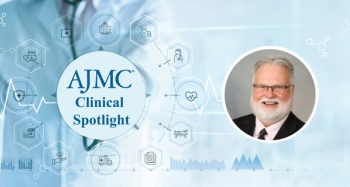
Dr Robin Kroll Highlights Treatment Options for Women With Endometriosis
There are good treatment options now for women suffering from pain as a result of their endometriosis, although it can sometimes be difficult to get women to even acknowledge their pain is unusual, said Robin Kroll, MD, medical director, Seattle Clinical Research Center.
There are 3 main ways that endometriosis can really impact quality of life for women but there are 2 very good options for second-line treatment if first-line treatment isn’t enough, explained Robin Kroll, MD, medical director, Seattle Clinical Research Center.
Those second-line treatment options are the result of clinical trials that have made a big difference in the ability to treat endometriosis and control its symptoms, she said.
In part 1 of her interview with The American Journal of Managed Care® (AJMC®), Kroll discussed the importance of clinical trial and challenges with getting women with endometriosis to enroll, as well as treatment decisions.
AJMC®:What is the effect of quality of life for patients with endometriosis?
Kroll: Endometriosis affects quality of life in 3 ways, at least. The hallmarks that we tend to look at are menstrual pain, non-menstrual pain, and dyspareunia pain with intercourse. We have women who are essentially unable to function during their menses, because their pain is so severe. We have women who have to curtail their activities because of their menstrual pain. That's the dysmenorrhea part. There are women who have pelvic pain all the time and that can limit them in all sorts of ways. Then, we have women who find intercourse painful, and women who find it intolerable. These really all affect the quality of life.
AJMC®:What is the role of clinical trials and research for identifying new therapies in management for endometriosis? How do you encourage your patients to participate in clinical trials?
Kroll: I have a lot of experience running clinical trials for endometriosis, and they're difficult to conduct. They're really important, and we've had major breakthroughs in the last 15-plus years that had made a really big difference in our ability to treat endometriosis and control the symptoms.
We really have to encourage women. We need to find women who have a firm diagnosis of endometriosis, which means that they've had a surgical procedure to confirm that in fact their pain is caused by endometriosis. Then, we need to enroll them in clinical trials, which are placebo-controlled. Some women get the investigational product and other women don't, but these clinical trials have led us to being able to offer new treatments that have made a really big difference in women's lives over the last few years.
There are a few reasons women are reluctant to participate. One is concerns about getting placebo. In order to qualify to participate in a clinical trial, a patient has to have a significant amount of discomfort and symptoms. The idea that she may be on a placebo arm can make it very difficult. It's important that the study be designed in such a way as to have good pain management for those women in a placebo arm, but that can be confusing in terms of teasing out the results. If we are giving women in the placebo arm pain medication, it's hard to know exactly what's effective. That's one big concern.
Another concern is that their endometriosis progress and get worse if they're on the placebo arm. The third is a reluctance to take medications, particularly if they've had bad experience with earlier medication.
Some of the clinical trials that have occurred in the last few years are for a class of drugs called GnRH antagonists. There's currently 2 on the market. One of them is relugolix and the other is elagolix. These are called GnRH antagonists. Previous drugs that were used for endometriosis were called GnRH agonists. Women had significant side effects with the GnRH agonists. There's a lot of negative information online about the GnRH agonists. When we explain to women that these newer clinical trials are for GnRH antagonists, and they work in a much different way, they're still a little bit reluctant.
I've had women say, “I don't want one of those GnRH drugs,” and we have to explain the GnRH agonist—the one that was most common was Lupron—actually causes a flare of the endometriosis when initially given as an injection. Once they get it, particularly if they get the depot form, it can last for 3 months, and they may have really severe flashes, mood swings, and some other untoward symptoms that are really bothersome.
Whereas with this class of drug that's currently come to market, the GnRH antagonist, the relugolix and elagolix, these are dose-dependent, and they work very quickly. They're oral agents. We can titrate the symptoms so that women don't have such severe symptoms, and if they don't like it, they can stop it, because it does not have a long half-life. It's not in the system that long. This is really important for women, because a lot of women who have been through a lot of treatments really feel a need to have some control and—particularly if they've had a depot injection in the past that’s caused them really problematic symptoms—this is a medication where they can control it. They just have to take a pill, and it makes a big difference.
AJMC®:What is your approach to the treatment of patients with endometriosis, and how do some of those factors potentially play into how you make decisions?
Kroll: Number one is diagnosing endometriosis. The gold standard, and the only way you could truly say for sure that someone has endometriosis, is to do a surgical procedure—most commonly a laparoscopy, but it still involves general anesthetic—and to look and actually see the endometriosis. We don't do that routinely. We do what we call presumptive diagnosis based on symptoms. Primarily the 3 symptoms that I spoke with you about: the menstrual pain, or dysmenorrhea; the non-menstrual pelvic pain, and the dyspareunia. There can also be some signs on pelvic exam and for an experienced gynecologist, we can sometimes say, “Yes, this feels like endometriosis.” But we treat presumptively.
If a woman comes in and she's got those symptoms, and we rule out other pelvic pathology, we don't feel anything else on exam, we usually will get an ultrasound. Then first-line therapy for these women is nonsteroidal anti-inflammatory drugs (NSAIDs) and oral contraceptive pills or hormonal contraception. We're going to have a certain number of women who are going to respond to this either because they have endometriosis or because the NSAIDs treat their pain and birth control pills make periods shorter and lighter, and so they feel better. While we haven't confirmed a diagnosis of endometriosis, if they feel better, that's great.
If neither of these things work, where can we go from there? Second-line therapy at this point is considered to be a GnRH antagonist, which is elagolix or relugolix. Some practitioners will use an intrauterine device at this point. That is another option.
Relugolix and elagolix have now been around for a couple of years. Elagolix was first approved for the treatment of endometriosis and, subsequently, in a slightly different form, with some add-back therapy, it's been approved for use with uterine fibroids. Relugolix has been on the market now for uterine fibroids. Relugolix in combination with estradiol and norethindrone acetate is marketed as Myfembree. It has recently been approved for the treatment of endometriosis.
We have 2 really good options now for second-line therapy. It's strongly recommended that this be tried prior to any surgical intervention.
Newsletter
Stay ahead of policy, cost, and value—subscribe to AJMC for expert insights at the intersection of clinical care and health economics.



























































